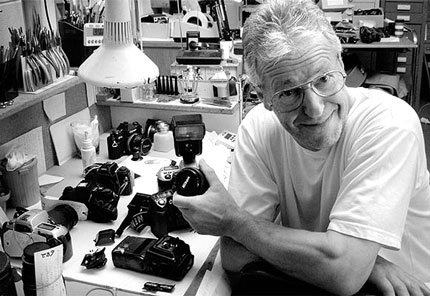A study is keeping Germany abuzz: according to a report by the Green Party, manufacturers of electronic products build selective “predetermined breaking points” into their products to shorten their life cycles. Be it washing machines, headphones or electronic toothbrushes, chances are that they’re not lasting as long as they could because they have built-in weak spots to break down faster. Well this isn’t something photographers have to worry about. Because in this digital age we resell perfectly good gear so fast we don’t even give cameras a chance to break down.
A quick search on the Net unearthes a considerable number of “predetermined breaking points” mentions for cameras and lenses. Right, most refer to damages caused by dropping your gear. Most lenses for instance have predetermined breaking points which usually result in an easily fixable “clean” defect without further issues for the lens and the body. Same goes for speedlights. But what about camera bodies? Or is there no need for such deceptive sales tactics because users upgrade anyways within ever shorter cycles?

Now when it comes to other electronics manufacturers, some provably use materials and parts that are intended to cause premature defects in order to sell more new machines. The industry calls this “planned obsolescence,” artificial aging process. They might use heat-sensitive parts in places where heat breaks the parts, and yes, even your iPhone has built-in planned obsolescence. Apple’s the king of premature product failures. Or try to change that obsolete battery yourself.
Or ever wondered why your printer insists the ink cartridge is empty even though it’s clearly not? Inkjet printers can be programmed in a way to stop working after a given time even though they’re good to go.
The use of more sturdy materials and better processing could easily increase the life expectancy of most consumer products. Clever marketing and ever faster innovation cycles condition the enduser into the urge to get rid of perfectly well working products. Take smartphones or tablet computers. And cameras? Well no, camera manufacturers don’t need to worry about this. They mostly produce already excellent durable quality that exceed most users’ capabilities and requirements. Users take care themselves of accelerating those purchasing cycles the industry loves:
Many users upgrade for slightest improvements, be it half a stop gained, sexier ergonomics, a new function, a new “S” to the products name or whatever. Cameras have become fashion articles that soon look boring until it’s only a matter of time to buy a newer, more fashionable one that all but improves one’s photography. Right.
Sometimes manufacturers delay technical improvements, even though bigger technical improvements would be possible. But then consumers won’t rise for the bait that easily anymore. Canon, Nikon, Sony, Olympus, Fujifilm et all have to keep consumers’ motivation alive to obediently buy the next version of something they just bought.


